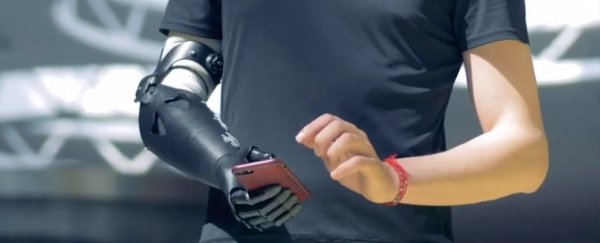If you want to control a robot with your mind - and really, who doesn't? - you currently have two options.
You can get a brain implant, in which case your control over the robot will be smooth and continuous. Or you can skip the risky, expensive surgery in favor of a device that senses your brainwaves from outside your skull - but your control over the bot will be jerky and not nearly as precise.
Now, a team from Carnegie Mellon University (CMU) is narrowing the gap between those two options, creating the first noninvasive mind-controlled robot arm that exhibits the kind of smooth, continuous motion previously reserved only for systems involving brain implants - putting us one step closer to a future in which we can all use our minds to control the tech around us.
In a paper published on Wednesday in the journal Science Robotics, the researchers describe how they used a combination of sensing and machine learning techniques to create a brain-computer interface (BCI) that could reach signals deep within the brains of participants wearing EEG headcaps.

To test their system, they asked the participants to use it to direct a robotic arm to point at a cursor as it moved around a computer screen. The robotic arm was able to continuously track the cursor in real-time with no jerky movements - an exciting first for a noninvasive BCI system.
While much of the focus on mind-controlled robots centers on people with movement disorders or paralysis, CMU researcher Bin He envisions a future in which the tech is ubiquitous, benefiting the population as a whole.
"Despite technical challenges using noninvasive signals, we are fully committed to bringing this safe and economic technology to people who can benefit from it," He said in a press release.
"This work represents an important step in noninvasive brain-computer interfaces, a technology which someday may become a pervasive assistive technology aiding everyone, like smartphones."
This article was originally published by Futurism. Read the original article.
